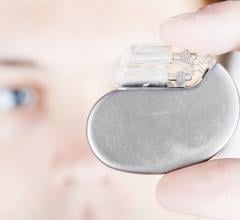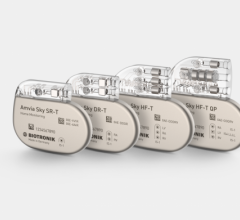July 8, 2010 – A new consensus statement released recently by the Heart Rhythm Society (HRS) offers guidance for managing cardiovascular implantable electronic devices (CIEDs) in patients nearing end of life or requesting device deactivation. The HRS expert consensus statement was presented recently at Heart Rhythm 2010, the society’s 31st Annual Scientific Sessions, and the complete guidelines will be published in the July edition of HeartRhythm, the official journal of HRS.
The consensus statement was written in collaboration with representatives from the American College of Cardiology (ACC), the American Geriatrics Society (AGS), the American Academy of Hospice and Palliative Medicine (AAHPM), the American Heart Association (AHA) and the European Heart Rhythm Association (EHRA).
For decades, CIEDs – pacemakers, implantable cardioverter-defibrillators (ICDs), and more recently cardiac resynchronization therapy (CRT) devices – have proven to save lives in various populations at risk of serious heart rhythm disorders. As indications for device therapy continues to expand, the population of patients with these devices continues to grow. The new consensus statement is the first to offer clinicians and industry guidance on the management of CIEDs in those patients at the end of their lives or requesting withdrawal of device therapy.
“The overall understanding of device deactivation varies, and addressing device management with patients nearing the end of their lives can be very uncomfortable for many clinicians,” stated lead author of the statement, Rachel Lampert, M.D., FHRS, Yale University School of Medicine in New Haven, Conn. “The goal of this document is to provide clinicians with an understanding of the ethical and legal principles underlying device deactivation as well as guidance on communication about device deactivation with patients.”
The Heart Rhythm Society brought together a diverse panel of experts to comprehensively address the legal, ethical and religious principles supporting device deactivation in patients who have made this decision. To address the topic, a multidisciplinary group was convened and consisted of electrophysiologists, patients and representatives from the fields of geriatrics, palliative care, psychiatry, nursing, law, ethics and divinity.
The consensus statement outlines common ethical and legal concerns related to withdrawing CIED therapies (device deactivation), a decision-making algorithm for withdrawing CIED therapies, how CIED-related ethical conflicts can be prevented and the rights and responsibilities of the clinician whose personal beliefs preclude his/her participation in device deactivation.
The new consensus statement presents several key points:
• A patient with decision-making capacity has the legal right to refuse or request the withdrawal of any medical treatment or intervention, regardless of whether he or she is terminally ill, and regardless of whether the treatment prolongs life and its withdrawal results in death.
• Legally and ethically, carrying out a request to withdraw life-sustaining treatment is neither physician-assisted suicide nor euthanasia.
• A clinician cannot be compelled to carry out an ethically- and legally-permissible procedure (i.e. CIED deactivation) that he or she personally views as in conflict with his/her personal values. In these circumstances, the clinician cannot abandon the patient but should involve a colleague who is willing to carry out the procedure.
• Any physician or center that implants CIEDs should have a clearly defined process to withdraw therapies at such a time that becomes appropriate.
• The deactivation process should include anticipation of symptoms and appropriate palliative care planning tailored to individual patients’ needs, as well as the needs of family members when appropriate.
For more information: www.heartrhythmjournal.com


 March 26, 2024
March 26, 2024 








